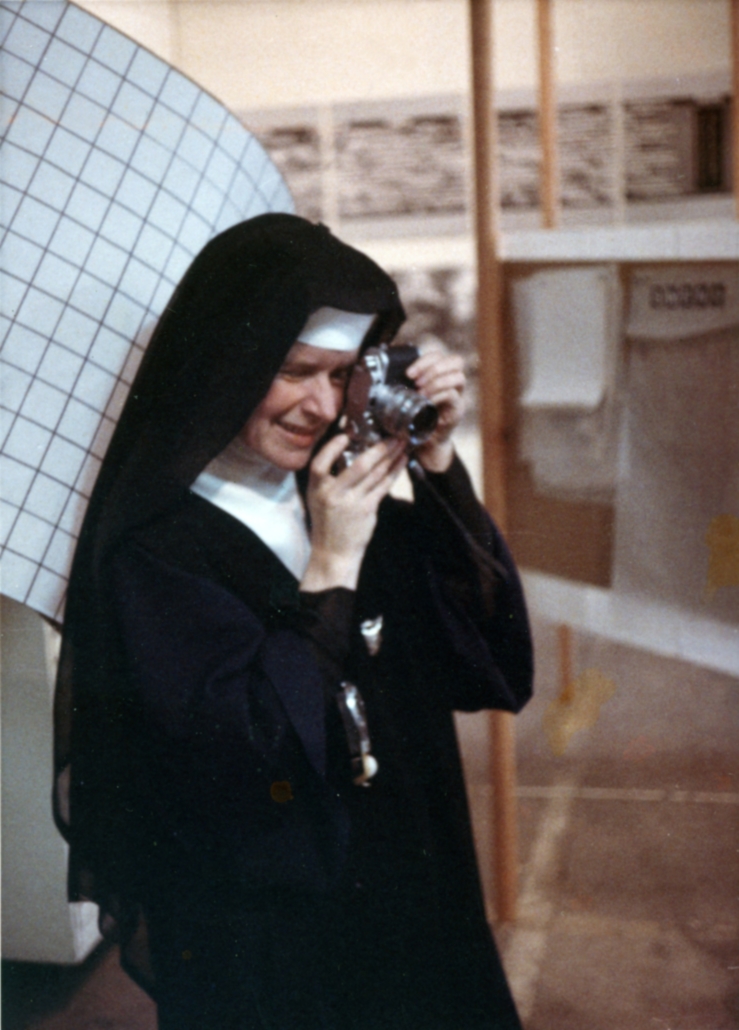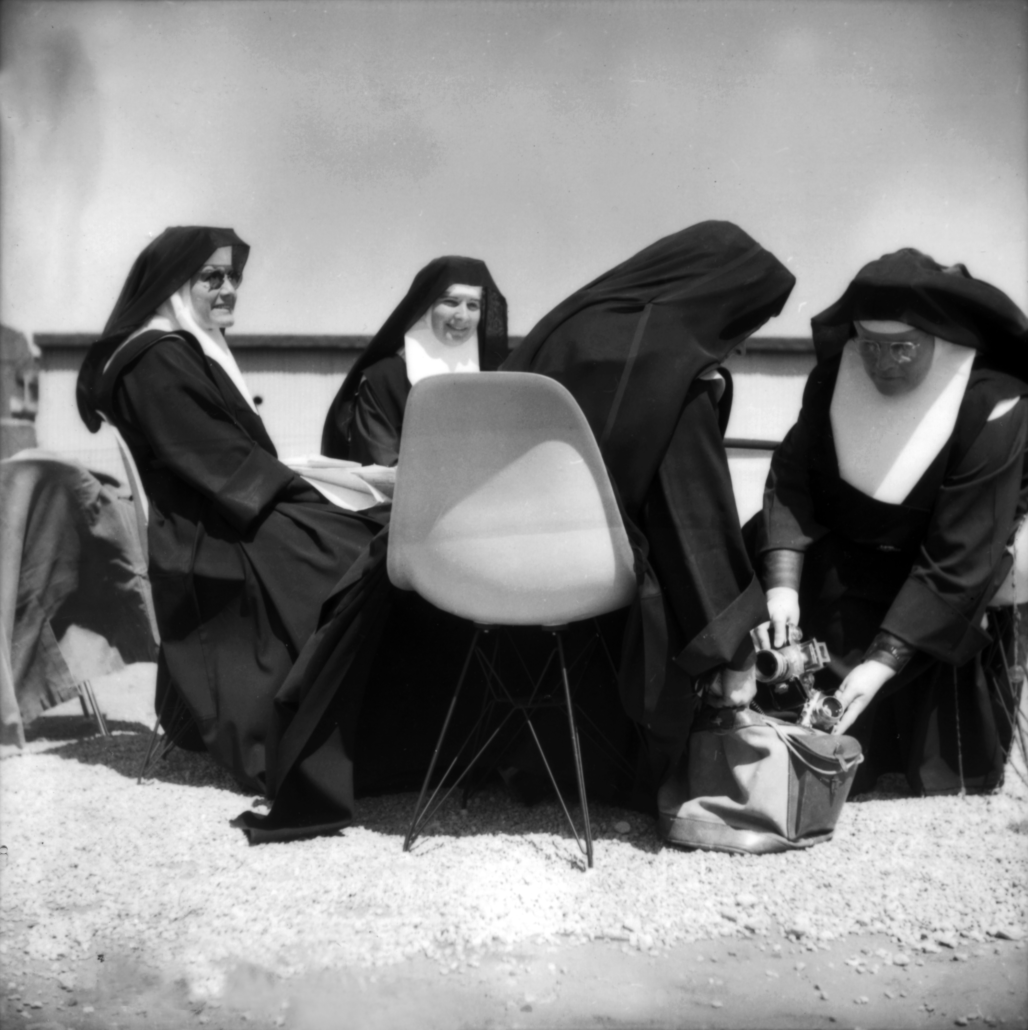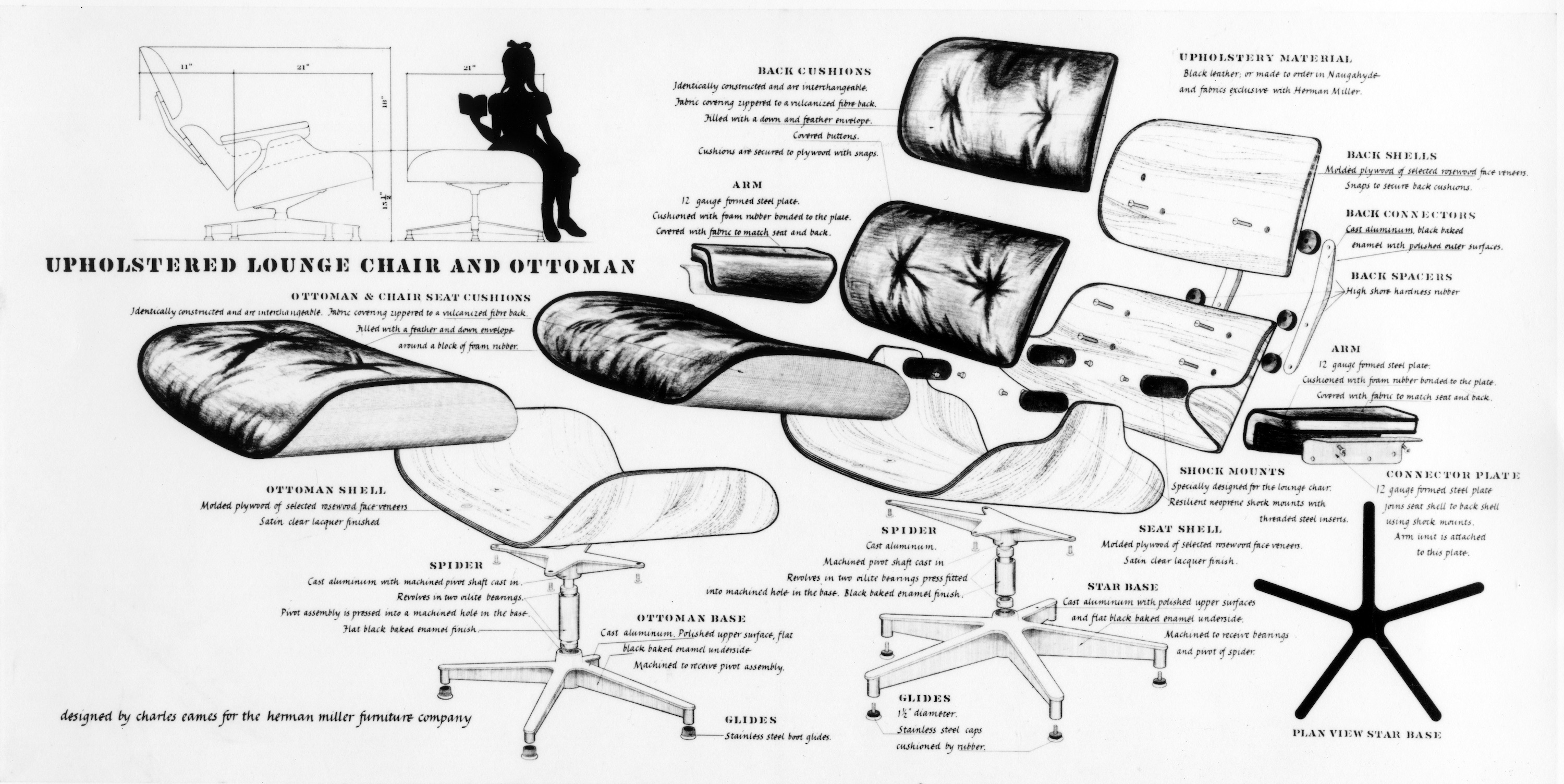When Corita Kent Met Charles and Ray Eames
In 1956, one of the most compelling designs of the 20th century was introduced to the world, the “Eames Lounge Chair and Ottoman.” Also known as the 670 and 671, this furniture set remains one of the most iconic designs ever produced by Charles and Ray Eames. For over 40 years, Charles and Ray Eames defined the language of modern architecture and furniture making using innovative materials, new techniques, and groundbreaking designs.
When the Lounge Chair and Ottoman first debuted in 1956, it included an insert with a graphical breakdown of the chair’s components that featured hand-drawn calligraphy from their friend and fellow artist, Corita Kent.
Corita Kent was a multi-disciplinary artist, teacher, and social justice advocate. At the age of 18, Corita joined the Order at the Immaculate Heart of Mary in Los Angeles and went on to teach art at Immaculate Heart College, contributing to its robust art department and establishing the school as a hub for innovative thinking.

©2022, 1956 Eames Office LLC (eamesoffice.com). All rights reserved.
Not too far away on Abbot Kinney in Venice, Charles and Ray were pioneering new design and furniture making techniques using inventive methods They took common materials and transformed them in unprecedented ways. Over the span of their career, the Eameses were committed to creating high-quality, multi-functional furniture that was affordable to the average consumer and able to be mass-produced. Their signature style and their most distinguished designs, including the Lounge Chair and Ottoman, featured molded plywood.
Corita Kent and the Eameses met in 1955 and quickly developed a devoted personal and professional friendship. One key component of Corita’s teaching practice involved taking students on field trips outside of the classroom to encourage them to visualize the world around them in different ways. A number of these field trips included visits to the Eames studio and home in the Pacific Palisades neighborhood of Los Angeles. Later on, as head of the art department at Immaculate Heart College, Corita would regularly invite renowned guest lecturers, including Charles Eames.

©2022, 1956 Eames Office LLC (eamesoffice.com). All rights reserved.
These visits at the Eames House became a source of great inspiration for Corita and sparked a handful of practices that she implemented in her classrooms. Corita recounted that on a particular field trip to the Eames House, Charles had bought a hundred 12-inch cartons to entertain his visiting grandchildren. She adapted that idea into a project for her students to decorate 500 12-inch squares that were then pasted on the sides of cartons to create what she called “building blocks.” These blocks would go on to be a part of installations like the IBM “Peace on Earth” display.
During their respective careers, Corita Kent and the Eameses continually shaped the landscape of pop art and design. They influenced each other’s work and often collaborated on projects that melded their mediums together. Much like Corita’s calligraphy accompanying their furniture, Corita also included images of Eames chairs in her work as well.
Through friendship, admiration, and collaboration, Corita Kent and the Eameses made significant and lasting contributions to the art world in the 20th century.
Featured image: Eames Lounge Chair and Ottoman graphical insert featuring lettering by Corita Kent.
Image provided by ©2022, 1956 Eames Office LLC (eamesoffice.com). All rights reserved.
Learn more about Charles and Ray Eames at Eames Office.
Learn more about the life and legacy of Corita Kent at the Corita Art Center

 2022, 1956 Eames Office LLC (eamesoffice.com). All rights reserved.
2022, 1956 Eames Office LLC (eamesoffice.com). All rights reserved.